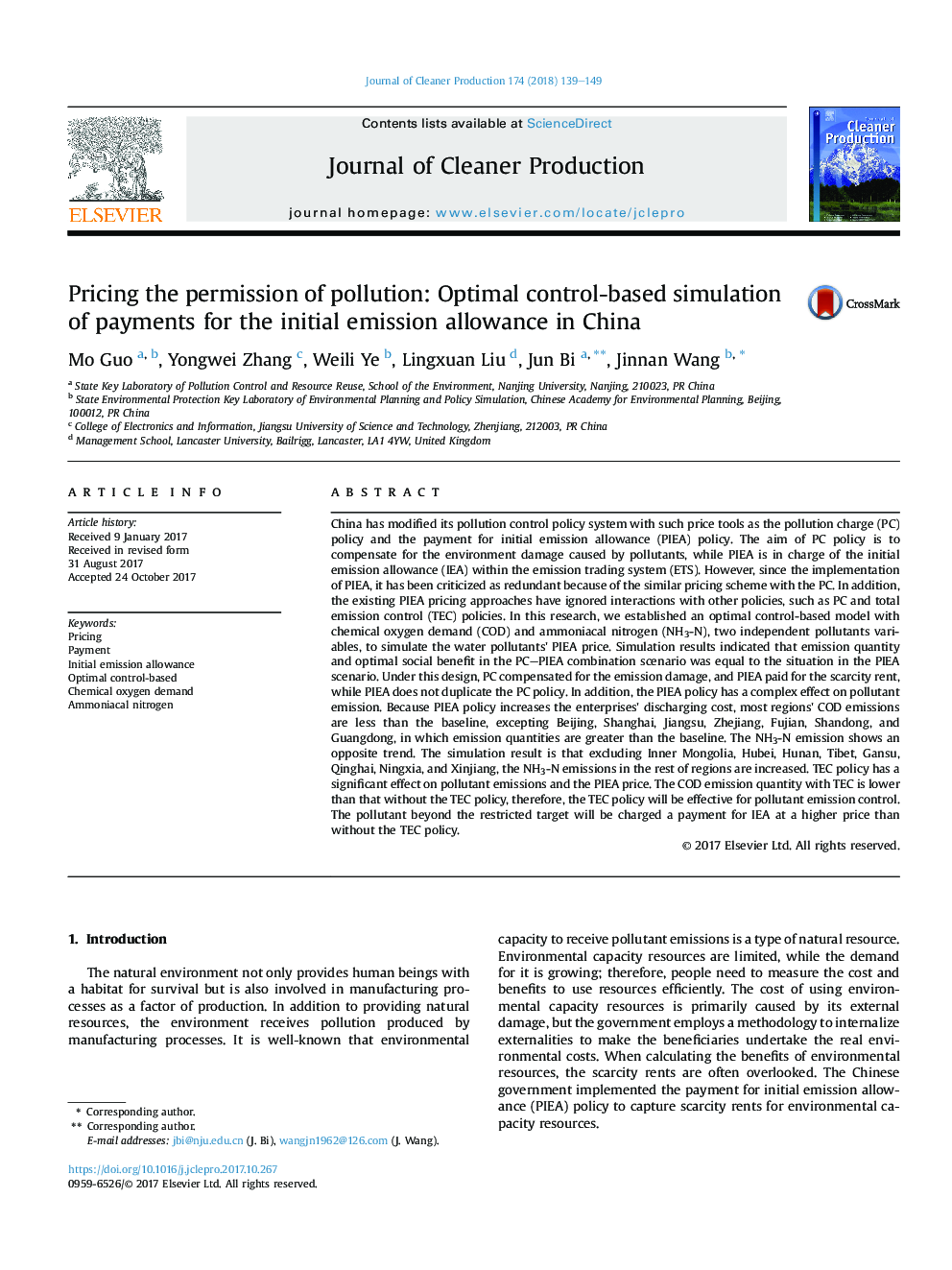| کد مقاله | کد نشریه | سال انتشار | مقاله انگلیسی | نسخه تمام متن |
|---|---|---|---|---|
| 8099325 | 1522079 | 2018 | 11 صفحه PDF | دانلود رایگان |
عنوان انگلیسی مقاله ISI
Pricing the permission of pollution: Optimal control-based simulation of payments for the initial emission allowance in China
ترجمه فارسی عنوان
ارزیابی مجوز از آلودگی: شبیه سازی مبتنی بر کنترل بهینه پرداختی برای کمک هزینه اولیه انتشار در چین
دانلود مقاله + سفارش ترجمه
دانلود مقاله ISI انگلیسی
رایگان برای ایرانیان
کلمات کلیدی
قیمت گذاری، پرداخت، کمک هزینه اولیه، بهینه بر اساس کنترل، تقاضای اکسیژن شیمیایی، نیتروژن آمونیاک،
موضوعات مرتبط
مهندسی و علوم پایه
مهندسی انرژی
انرژی های تجدید پذیر، توسعه پایدار و محیط زیست
چکیده انگلیسی
China has modified its pollution control policy system with such price tools as the pollution charge (PC) policy and the payment for initial emission allowance (PIEA) policy. The aim of PC policy is to compensate for the environment damage caused by pollutants, while PIEA is in charge of the initial emission allowance (IEA) within the emission trading system (ETS). However, since the implementation of PIEA, it has been criticized as redundant because of the similar pricing scheme with the PC. In addition, the existing PIEA pricing approaches have ignored interactions with other policies, such as PC and total emission control (TEC) policies. In this research, we established an optimal control-based model with chemical oxygen demand (COD) and ammoniacal nitrogen (NH3-N), two independent pollutants variables, to simulate the water pollutants' PIEA price. Simulation results indicated that emission quantity and optimal social benefit in the PC-PIEA combination scenario was equal to the situation in the PIEA scenario. Under this design, PC compensated for the emission damage, and PIEA paid for the scarcity rent, while PIEA does not duplicate the PC policy. In addition, the PIEA policy has a complex effect on pollutant emission. Because PIEA policy increases the enterprises' discharging cost, most regions' COD emissions are less than the baseline, excepting Beijing, Shanghai, Jiangsu, Zhejiang, Fujian, Shandong, and Guangdong, in which emission quantities are greater than the baseline. The NH3-N emission shows an opposite trend. The simulation result is that excluding Inner Mongolia, Hubei, Hunan, Tibet, Gansu, Qinghai, Ningxia, and Xinjiang, the NH3-N emissions in the rest of regions are increased. TEC policy has a significant effect on pollutant emissions and the PIEA price. The COD emission quantity with TEC is lower than that without the TEC policy, therefore, the TEC policy will be effective for pollutant emission control. The pollutant beyond the restricted target will be charged a payment for IEA at a higher price than without the TEC policy.
ناشر
Database: Elsevier - ScienceDirect (ساینس دایرکت)
Journal: Journal of Cleaner Production - Volume 174, 10 February 2018, Pages 139-149
Journal: Journal of Cleaner Production - Volume 174, 10 February 2018, Pages 139-149
نویسندگان
Mo Guo, Yongwei Zhang, Weili Ye, Lingxuan Liu, Jun Bi, Jinnan Wang,
